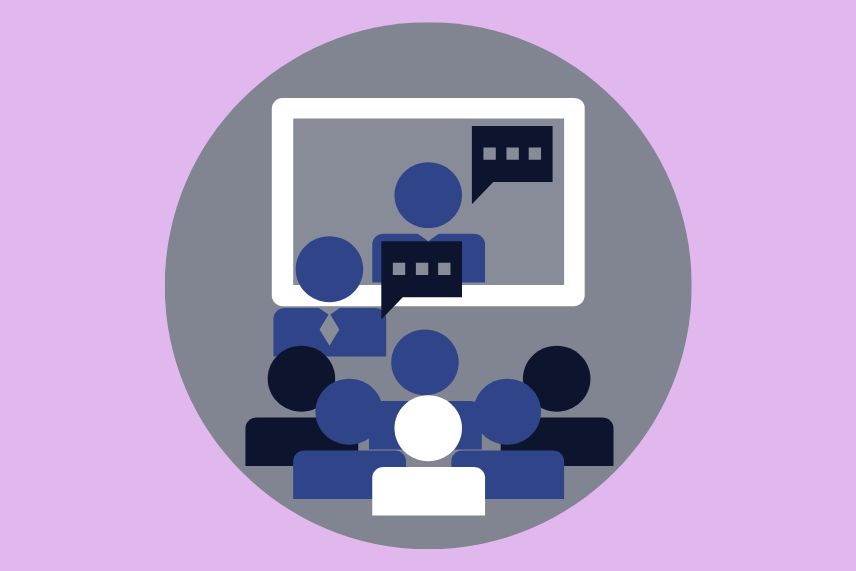The workplace has evolved, becoming more sophisticated by the day. This is not to say that companies are hiring people with insufficient qualifications.
On the contrary, as businesses strive to hire only the best people to serve their customers, hiring processes have become more thorough.
However, like in our everyday life, improvement has been made to improve effectiveness in the workplace. Such improvement includes introducing technological tools for more streamlined business and work procedures, solutions to improve workplace productivity, and employee training programs.
Effective employee training reduces employee turnover, boosts productivity, fosters a feedback-driven culture, and makes your staff feel assured that they have what it takes to accomplish their best work.
Employee training and employee retention go hand-in-hand, as the rate of employee retention increases by 30–50% at businesses with an effective training program. The 2019 Workforce Learning Report from LinkedIn found that 94% of workers say they would stay at a company longer if it simply invested in their education.
The secret to an employee’s loyalty is their willingness to set aside money for training. They are less likely to look for alternative opportunities the more they feel like their progress is being prioritized.
Employee training, however, might be difficult because it is not as easy as assembling the staff in a conference room and giving them a three-hour lecture.
For starters, traditional teaching methods like lectures are ineffective because they fail to engage students and employees.
This article observes some of the biggest challenges business owners face during employee training. However, before we proceed, let’s briefly examine employee training and its importance.
What Is Employee Training?

Employee training is a program that assists workers in acquiring the necessary knowledge and skills to improve their performance in their current positions. This training may include technical, vocational, or management skills.
Until recently, apprenticeships and on-the-job training were the norms for training. Often at a young age, new hires would begin working for their employer and become fully immersed in their new position until they attained mastery.
However, as industrial technology started to permeate the workplace, the demand for more specialized skills increased. Formal training courses quickly spread like wildfire throughout factories.
Computers, mobile devices, and digital training tools have grown in popularity over the past few decades, leading to blended training programs that use both human trainers and computers. As a result, workplace training spread like wildfire until most organizations adopted it as standard procedure.
The primary objective of employee training programs is to increase the organization’s production capacity, be it a product or service.
Why Should Business Owners Invest in Employee Training Programs?
Workplace training programs are designed to provide employees with the knowledge and skills they need to perform their current jobs more effectively and efficiently.
However, although most businesses recognize the importance of training new employees and orienting them to the company’s culture, many fail to invest in their employees’ ongoing training and development because of the expenses involved, which usually cost them talent, productivity, and profits in the end.
High-quality employee training and development allows businesses to retain the right talent while increasing profits. The competition for top talent is fiercer than ever in today’s competitive job market.
Recruiting quality employees takes time and money. However, training, developing, and engaging those employees directly impacts their retention and the business’s success. Here are some of the reasons why you should invest in some employee training for your staff.
Employee Retention
By educating your staff through employee development programs, you could overcome significant obstacles that many organizations face in the hiring and employee retention processes. Employees view training initiatives as a means to improve their job performance because they perceive them as educational programs.
By supporting sales training programs, for instance, your salespeople can gain new or additional insights to hone their selling techniques and boost their self-confidence and work outlook.
Your reputation as an employer who values the professional development of their employees will also improve. If you encourage your employees’ skill development and personal growth, you can give your business a competitive edge in the marketplace.
| Recommendation |
|---|
| Searching for automating smaller tasks for your sales team, then check out the software listed our page ‘Sales software.’ |
Increased Employee Engagement
Your employees would value the opportunity to learn. People want to work in both new and exciting environments, as opposed to passive and uninspiring ones. If they do the same job every day with no change on the horizon, their morale will suffer.
Employees not allowed to participate in more productive jobs are less likely to be inspired and fulfilled at work. Unmotivated and disengaged employees perform poorly, resulting in decreased production and profitability. However, you can expect your employees to be more loyal to your company if you invest in their education.
Competitive Advantage
Some time ago, during a conference, the moderator talked about employee training, and a concerned friend and partner with some reservations about the whole process asked…
“What if we train our staff and they leave?”
To which he replied;
“What if we do not train our staff and everyone stays?”
When you assist your employees in developing their skills and achieving personal growth, you unlock a talent pool that can give your business a competitive edge in the marketplace.
Offering an employee development program as part of your perks and benefits package is a one-of-a-kind method to attract top talent to yourself. Training your employees in the best practices for your industry could give your competitors a run for their money and help you build your credibility.
Improved Operational Quality
Training improves your employees’ ability to do their regular tasks. Training can also help to ensure process compliance, making it easier to project results and accomplish company objectives and targets.
The most successful training programs allow workers to become multi-skilled. Businesses will find it easier to hire individuals with a diverse set of talents to manage a variety of duties. Being able to multitask effectively has the extra benefit of improving business operations.
Improved Teamwork and Collaboration

To avoid misunderstandings or issues brought on by miscommunication when a team is working together, it is crucial to give employees proper communication training.
When team members communicate clearly and effectively, there will be fewer mistakes to correct, resulting in less time wasted on task completion.
A team-focused work ensures that everyone at the firm works towards the same goal and that no one lags in their tasks. In addition, promoting a continual training culture in the workplace allows your staff to work in an adaptable, flexible, enjoyable, and productive environment.
Types of Workplace Training Programs for Employees
Depending on a company’s size, needs, and activities, different types of employee training programs are used. The following are some of the most common kinds of training programs:
Onboarding Training
Onboarding training brings new employees up to speed, helps them to understand their new responsibilities, become acquainted with company culture, and makes them productive team members.
While employee orientation is a quick process that introduces employees to their new workplace, employee onboarding is a series of events that can sometimes last a week or months. Onboarding is in charge of truly integrating an employee into an organization.
Compliance Training
Most sectors have regulatory organizations that ensure that operations run smoothly. Compliance training, which is frequently provided as part of the employee onboarding process, familiarizes employees with the regulations that apply to their industry and instructs them on their legal obligations.
Some sectors require compliance training and sometimes staff certification as part of the regulatory process.
A well-designed compliance training program can help organizations avoid ethical lapses and function smoothly. Better and safer working conditions are provided for employees, risks are curbed, and reputation is maintained.
Technical Training
The information technology sector is constantly changing as new technologies are introduced, and an unlimited number of new software applications and technologies are emerging in every industry.
Employees must constantly adopt new technologies or update existing ones to avoid falling behind the competition. Technical training allows your employees to develop core technical skills and master the technical aspects of their jobs.
Product Training

Product and service training programs encompass all of the products and services you provide. They go over the aspects of each briefly.
During this training, employees are not only taught how to utilize the product, they are also shown the unique selling point for each product or service that your firm provides.
Product and service training should focus on features, warranties, and frequently asked questions. Ensure that your staff comprehends the product or service for internal and external needs.
Product and service training is essential for employees whose jobs require interacting with clients.
Sales Training
Sales training helps to increase the skills of your sales force by teaching them sales strategies, software tools, and new approaches to selling. Effective sales training programs assist sales teams in defining the benefits of products and services, addressing the client’s unmet needs, and moving them one step closer to a purchase.
For example, a company may gather its sales personnel and provide them extensive training on how their recently enhanced CRM software can better serve their clients. You could also train new employees how your organization uses email marketing tools.
You cannot overlook the importance of employee training in any organization. However, several employee challenges continue to challenge the scheme. Below are some of the biggest employee training challenges.
9 Obstacles for Business Owners During Employee Training
Remote Working
Over the past two years, remote working has increased in response to the issues brought on by the Covid pandemic. While this has real advantages, it also presents difficulties when it comes to planning employee training.
Typically, organizations would gather employees for training at a predetermined time and location. However, this method is logistically challenging due to remote working practices.
Because Covid is still a daily reality, L&D teams still struggle to protect employees’ health without running the risk of exorbitant last-minute cancellation fees if people must self-isolate.
Additionally, it could be costly to transport team members to a particular place at a specific time. To solve this problem, organizations can use virtual solutions like video capture software that allows you to record tutorials and distribute them to many outlets for employees.
Response To Change
Employees can react to any new technology, program, or training module that a business introduces by either embracing the change and adjusting to it or feeling burdened by it and vehemently rejecting the change.
You must have a properly organized change management plan in place for your employees to understand why this change or training module is necessary and what value it may add to their day-to-day job tasks. This will help you deal with this difficulty effectively. One of the best methods to assist your staff in adapting and making the most of the training is engaging and interactive e-learning solutions. It reduces employee resistance and guarantees easy implementation of training programs.
Training Costs
Although there are numerous free and low-cost online training choices, these courses are unlikely to match all of your organization’s skill requirements. Investment in training is necessary for a genuinely significant and effective learning and development program, and there are various hidden expenses to consider when creating and executing one.
This can include apparent charges like development costs, trainer delivery fees, equipment and venue costs, or paying course fees for off-the-shelf courses, which can be daunting for small businesses.
Additionally, you must consider expenses such as travel, lodging, and employee downtime. When all of this is considered, training can be an expensive endeavor.
Different Learning Habits
Whether you’re training 10 or 100 people, it’s critical to consider learner preferences and habits to avoid future training problems.
At least three generations are represented in the modern workforce, each with a fundamentally different relationship with technology. As a result, assuming that all employees are similarly tech-savvy or have the same knowledge levels and learning habits will make your training less effective.
To address this issue, conduct extensive research to identify how best your audience learns and personalize your training to their learning habits.
Additionally, because there are three generations, some of whom are not very tech savvy, ensure that there is IT help for any issues your pupils may face. Create communities for learners to communicate and make learning more enjoyable.
Lack of Employee Feedback
Employee feedback is a vital predictor of a suitable training module. Without the option for employee feedback, you have no way of knowing what your employees are learning and whether your programs impact them.
Without a feedback loop, it’s simple to keep running ineffective initiatives, blaming employees for poor performance, and eventually driving down staff morale.
Excellent feedback is required to make the necessary modifications in training systems. To be truly effective, endeavor to obtain accurate and honest feedback from your employees. Make sure your staff is heard and taken seriously at all levels. This will encourage them to provide accurate feedback.
Training Standardization
Another problem of employee training programs, particularly in big corporate contexts, is consistency and obtaining the same learning results from the same learning resources.
It’s difficult to verify that training techniques and expertise are uniformly consistent when you rely on external trainers for some delivery. You can reduce this training problem in this situation by designing a clear, unambiguous curriculum.
Since most of your learning will take place online, developing standardized training modules should be considered. For example, all modules might have the same time limitations, highly specified, clearly stated learning goals, or be presented in a visually identical manner.
Diversity of Cultures in the Global Workforce
If you work in a global firm, you know that the diversity and breadth of the workforce provide one of the greatest challenges for training managers. How can you provide vital training abroad while addressing linguistic and cultural differences? Globally, learning styles vary, and what works well in one region may not work well in another.
Consider your intended audience and give not just bilingual but also multicultural materials. Consider the delivery method as well: certain cultures may benefit more from collaborative group training sessions, while others would prefer an individual approach.
After in-depth research on preferred learning culture, employ learning management systems fully equipped with localization and translation features for your audience.
Ineffective Training Methods
It is a common practice for business owners to use inadequate and out-of-date training techniques for their employee training. Even if you choose the most expensive or highly rated software, if it doesn’t meet the immediate learning needs of your staff, it might not be effective for your business. Because different people have different needs and learning styles, it is difficult to ensure that everyone will benefit equally from the same training techniques.
Consider your employees’ learning needs and competencies before creating your training modules. Companies that continue to use ineffective training methods may invest much money in staff training and providing them with the tools they need to perform better.
However, they will never see a good return on investment if their training methods only fulfill the employers’ requirements rather than meet their employees’ needs.
Trainee Participation
Another challenge in training and development is ensuring that your staff fully engages with your learning platform and content. This is primarily due to the trainee’s inability to comprehend the objectives or recognize the training’s relevance to them. Occasionally, the delivery style can feel stale and monotonous.
There are two approaches to this problem. First, create a dynamic training portfolio that uses a variety of strategies to achieve its learning objectives. Use microlearning and various audio and visual components in your learning management provision.
Making the potential learner an active participant in their own learning, on the other hand, is a far more effective strategy for ensuring engagement. Using surveys and evaluations, create engaging, personalized content that will make your staff feel like they were a part of its creation.
In Conclusion
One thing all successful firms have in common is highly competent and productive personnel. Individuals, teams, and organizations must take employee training seriously to grow and thrive.
However, training your personnel is a complex undertaking that may provide numerous problems. As a result, it is best to examine everything ahead of time to ensure that your staff receives anything from their training. Here’s a list of our top learning management solutions for more employee training solutions.
Author
Methodology
- Who?
We are SaaS experts: Our specialists constantly seek the most relevant information to help support your SaaS business. - Why?
We are passionate about users accessing fair SaaS pricing: We offer up-to-date pricing data, reviews, new tools, blogs and research to help you make informed SaaS pricing decisions. - How?
With accurate information: Our website manager tests each software to add a Genius Score using our rating methodology to each product. Our editorial team fact-check every piece of content we publish, and we use first-hand testing, value metrics and leading market data.
